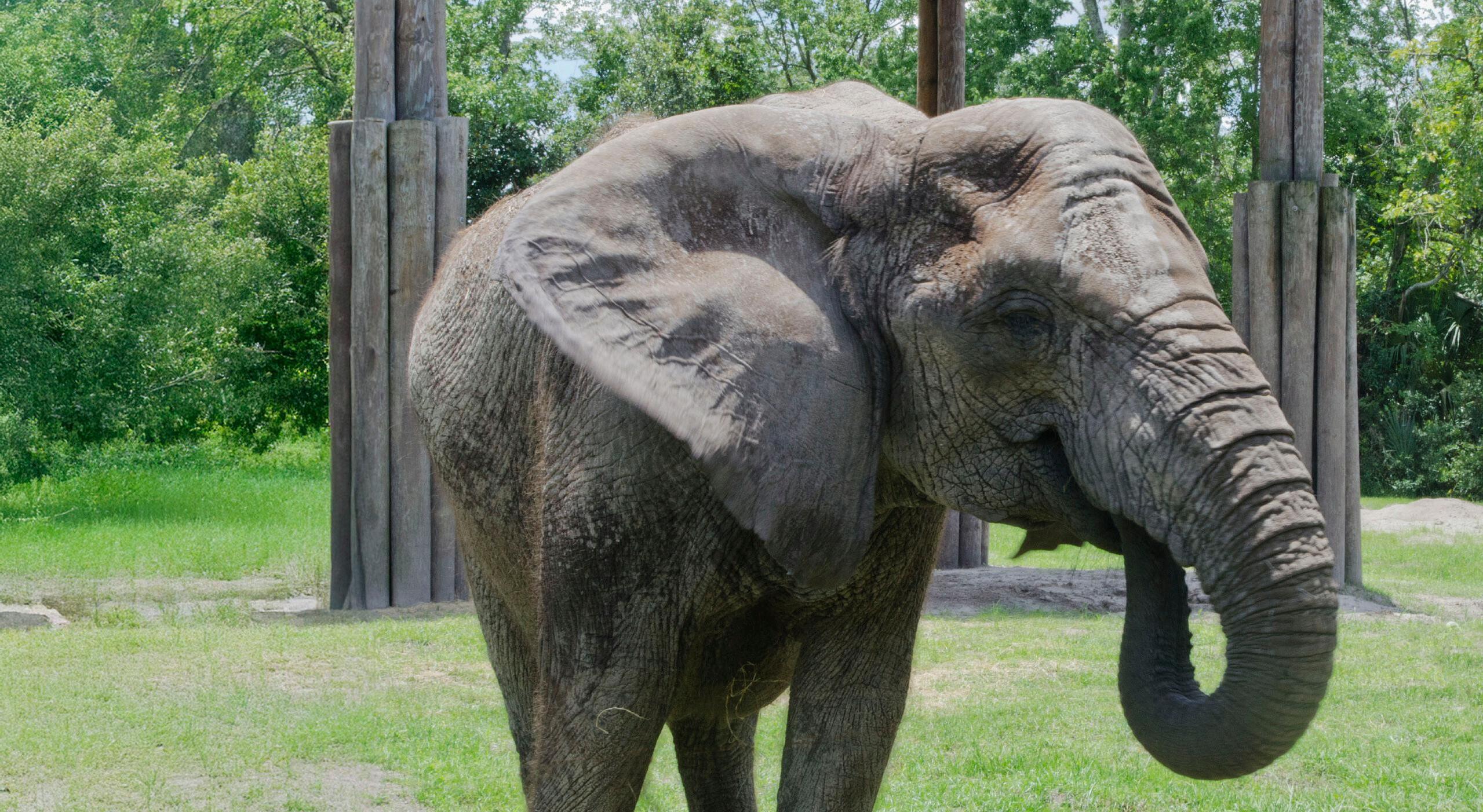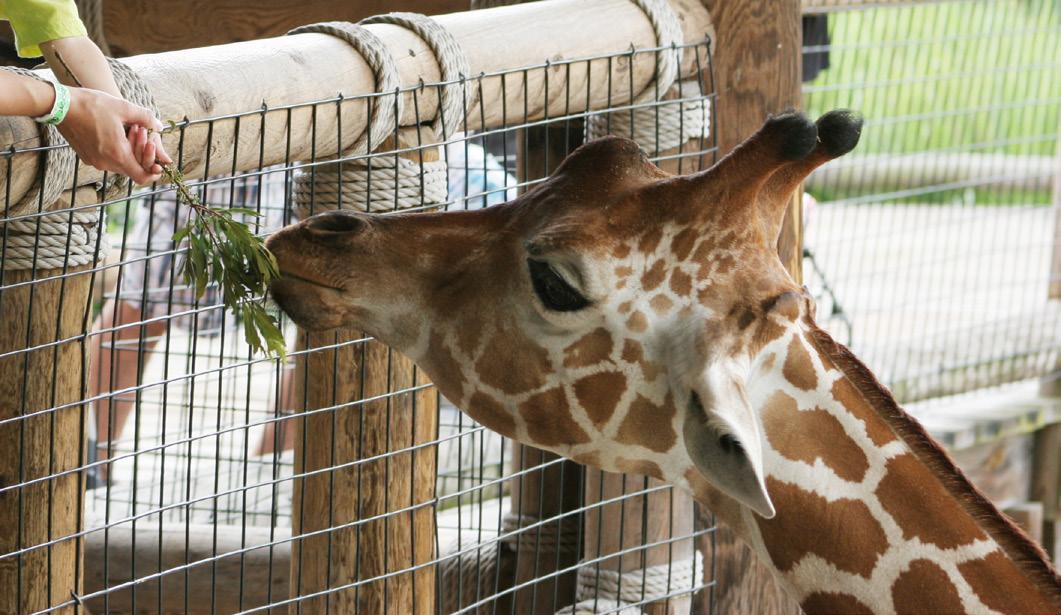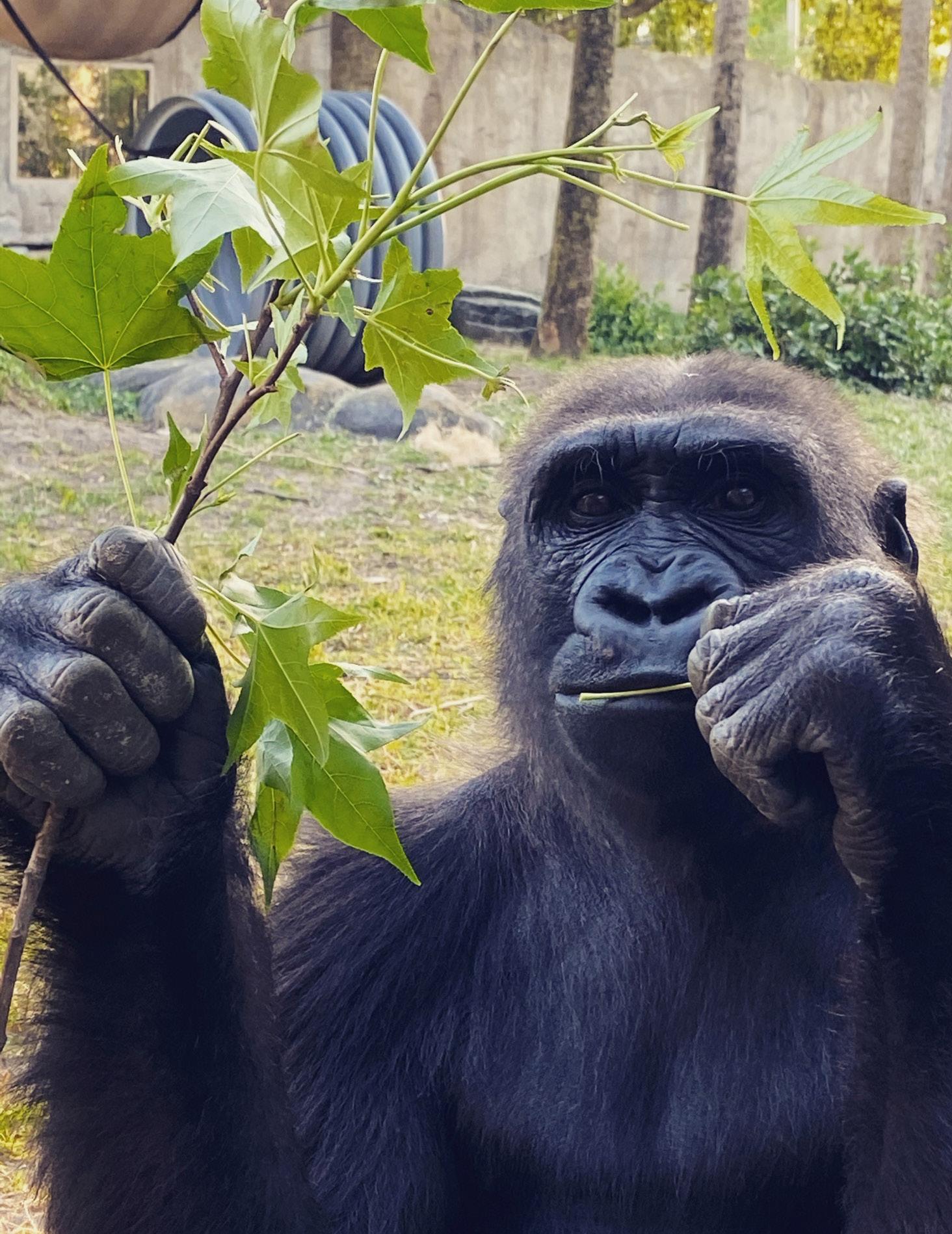
2 minute read
It Takes a Village to Feed a Zoo
By Alexis Rosa Browse Program Technician
While some animals, like zebras and white rhinos, have evolved to graze on grasses, others are natural browsers, relying on leaves, twigs and branches from trees or shrubs for their diet. Take giraffes, for example—they developed long necks to reach the foliage of tall trees. For these animals, browse isn’t just an enrichment item that encourages natural foraging behaviors; it’s a critical component of their daily diet, essential for maintaining their health and well-being.
Elephants, for instance, require significant amounts of woody browse to support good dental health, allowing for the natural progression of their marching molars. However, providing enough browse for just one elephant is a challenge—feeding an entire zoo requires a collective effort.
Unlike hay or produce, browse isn’t readily available for purchase in bulk. That’s why Jacksonville Zoo and Gardens relies on a community-driven approach. Zoo staff, interns and volunteers are trained to identify and sustainably harvest approved plant species, ensuring that animals receive the necessary nutrition while maintaining responsible environmental practices.
To source enough browse, the Zoo partners with organizations and individuals across northeast Florida. One key partner is the City of Jacksonville Parks, Recreation, and Community Services Department, which allows Zoo staff to collect browse from city parks. This collaboration benefits both the Zoo and the parks—Zoo staff help maintain trails by trimming overgrown branches and clearing debris from severe weather.
Another valuable partnership is with the Horticulture team at the University of North Florida Botanical Gardens. When university staff and volunteers prune plants, zoo staff collect the trimmings to feed the animals, ensuring that nothing goes to waste.
Our browse program extends beyond institutional partnerships to include private landowners and local residents. Homeowners across Jacksonville can donate trimmings of approved browse plants from their own gardens. Those who live within ten miles of the Zoo can even arrange for staff to pick up their plant trimmings directly.
By working together, the community helps provide essential nutrition for our animals while fostering a deeper connection to wildlife conservation. If you’d like to join the effort, visit Jacksonville Zoo and Gardens Browse Program to learn more.












